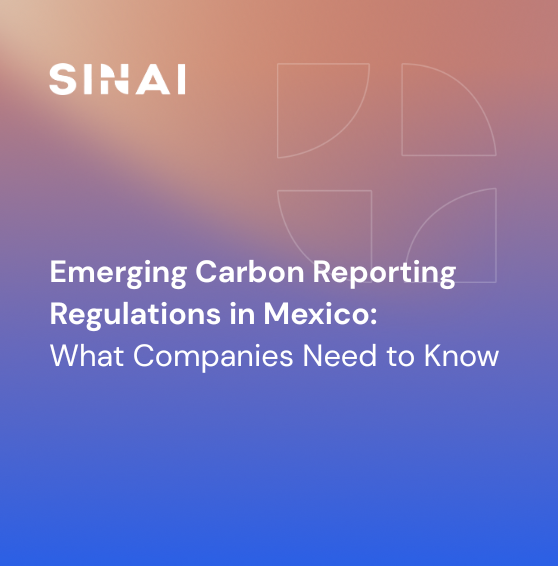
Achieving Science Based Targets in the Apparel Sector
Over the last several years, the fashion industry has come under scrutiny for its environmental impacts as well as social and labor practices, which have been documented in numerous reports and books. The term “fast fashion” has become a commonplace term to embody the issues with the current business model of mass-produced, cheap and trendy clothing. As the world’s third-largest manufacturing sector after the automobile and technology industries and contributor of up to 10% of global greenhouse gas emissions, there is a significant opportunity for the apparel and textiles industry to reduce its environmental impact and contribute to a 1.5-degree future in order to address climate change.
Several textiles, apparel, footwear and luxury goods brands and companies have stepped up to set science-based targets as seen by the 105 companies listed on the Science Based Target website, 55 of which are committed to a 1.5-degree target. Yet, much more needs to be done given the global supply chain and thousands of businesses that are a part of this sector. According to a 2020 McKinsey report, just over 60% of the opportunity for the fashion industry to reduce its emissions come from upstream operations. Therefore, the following strategies are meant to be a starting point for upstream supplier companies or any other fashion industry company to consider its own opportunity to contribute to addressing climate change while improving its business prospects.
Monitor data and pursue efficiency opportunities.
The first strategy addresses the basic continuous improvement cycle of reducing operating costs by understanding the energy use by processes within a factory, pursuing cost effective energy efficiency
projects, and tracking these savings to ensure performance. It is important to take a portfolio approach to identifying several opportunities within an organization that has multiple facilities and/or within a single facility that has multiple processes and production lines. This side-by-side comparison not only helps an organization to simply track all the potential project opportunities but it also enables cost effective capital deployment for the organization. Not all efficiency projects have the same return on investment and, similarly, manufacturing companies need to consider the project implementation timelines and their impacts to ongoing business operations.
Source renewable energy to power facilities.
Manufacturing facilities have significant energy demands and oftentimes can pursue cost effective bi-lateral agreements with its local utility to source renewable energy. Separately, renewable energy continues to become increasingly cost effective in many regions. As governments and regional agencies are looking for policy levers to increase the ability to bring on more renewable energy to their local electric grids, there are also growing opportunities for businesses to directly sign long-term contracts to source renewable energy. These long-term renewable energy contracts can provide pricing stability and relatively predicable power generation if set up well.
Incorporate climate risk evaluation and mitigation for large capital investments.
Given the large capital outlay to site and buildout new facilities as well as long-term scenario planning to assess the return on investment, it is important to take into consideration the climate change implications for businesses. The world is already seeing an increase in extreme weather events that disrupt business operations and supply chains. Furthermore, both the frequency and intensity of these extreme weather conditions are expected to increase as a result of continuing climate change. Shrewd businesses should start incorporating these climate risks (to their operations, supply chain and downstream customer deliverables and impacts) into their business and investment strategies.
Set a science based target to differentiate from competition and/or support customer goals.
Regardless of whether a business has one factory or multiple, it exists to provide value and it must exist within the planetary boundaries that translate to resource constraints and material costs. While the strategies listed above can be pursued without a goal, they will be much less effective and, overall, less impactful without an organizational target to work towards; as with any other business endeavor, setting specific targets and putting resources towards these goals will drastically increase the chances of success. Companies that set a science based target right now can differentiate themselves from their competitors and become a leader that drives sustainable growth. For many companies that are not customer-facing brands, this is still an important endeavor precisely because many of the customer-facing brands have set these ambitious goals and will be engaging (if not demanding that) their supply chain to help them achieve their commitments to be more sustainable.
Climate change and its impacts will be enduring issues for several decades at a minimum and every business has a responsibility and opportunity to contribute to addressing climate change while working towards zero-carbon business growth. The strategies outlined above can feel daunting when seen as an added layer above already demanding and ongoing operations. This is where technology can provide invaluable tools to engage organizations and automate the monitoring, pricing, risk analysis and performance evaluation against emissions reduction goals. Connect with Sinai Technologies, a leading technology company focused on supporting your decarbonization journey, to learn more.
References
- Waite-Taylor, Eva. (July 10, 2020). "Fast fashion books: Learn the truth behind the industry". Independent. https://www.independent.co.uk/extras/indybest/books/non-fiction-books/fast-fashion-book-brands-industry-environment-ethical-sustainable-boohoo-a9607951.html.
- World Bank. (September 23, 2019). “How Much Do Our Wardrobes Cost to the Environment?”. https://www.worldbank.org/en/news/feature/2019/09/23/costo-moda-medio-ambiente.
- Forrester et al. (November 30, 2020). “The clothing industry produces 3 to 10% of global greenhouse gas emissions, as accurately claimed in Patagonia post”. Climate Feedback. https://climatefeedback.org/claimreview/the-clothing-industry-produces-3-to-10-of-global-greenhouse-gas-emissions-as-accurately-claimed-in-patagonia-post/
- Science Based Targets. “Companies taking action”. https://sciencebasedtargets.org/companies-taking-action?sector=Textiles%2C%20Apparel%2C%20Footwear%20and%20Luxury%20Goods#table. Accessed 16 September 2021.
- Berg, Achim, Anna Granskog, Libbi Lee, and Karl-Hendrik Magnus. (August 26, 2020). “Fashion on climate”. McKinsey. https://www.mckinsey.com/industries/retail/our-insights/fashion-on-climate.
- Duncombe, Jenessa. (August 25, 2021). “Climate Change and Extreme Weather Linked in U.N. Climate Report.” EOS. https://eos.org/articles/climate-change-and-extreme-weather-linked-in-u-n-climate-report.
- Samenow, Jason and Kasha Patel. (August 9, 2021). “Extreme weather tormenting the planet will worsen because of global warming, U.N. panel finds”. The Washington Post. https://www.washingtonpost.com/weather/2021/08/09/ipcc-2021-extreme-weather-climate/.











